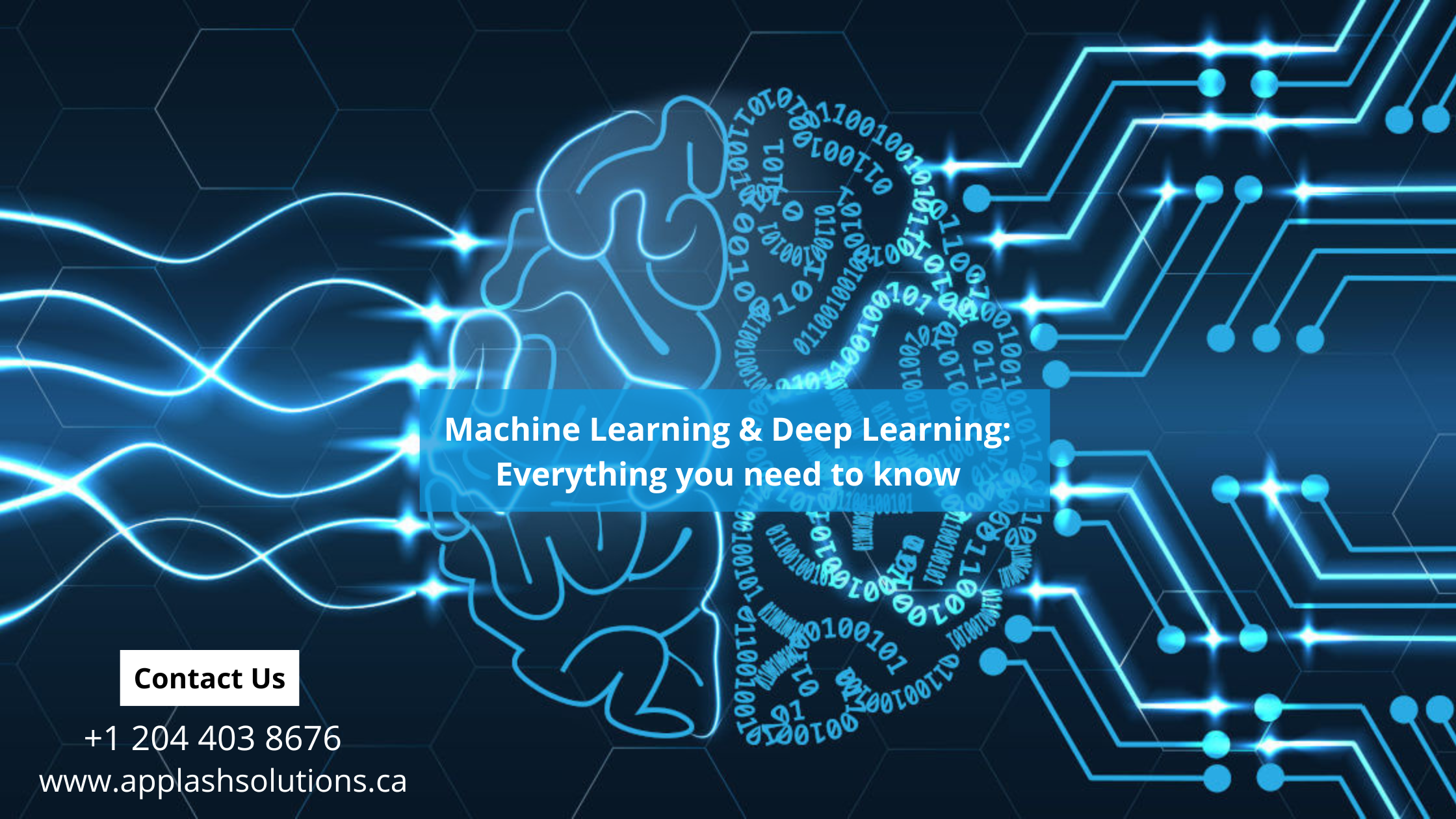Machine Learning has made it a lot easier for many industries. This technology has simplified all the functions that previously required human aid. Deep learning, a sub-field of Machine Learning, is used in various ML functions. Machine Learning and deep learning are usually viewed as the same thing but aside from a few similarities, there are many differences between the two and we are here to explain the variations between the two. Both have proven to be quite convenient in app development. Our team at Applash Solutions, has used it in various android apps as well as iOS apps.
Difference between ML and DL
Machine Learning breaks down the data and attempts to predict the favored results. The neural networks made are of one input usually and just with a hidden layer, that’s why they are normally shallow. Machine Learning is mainly divided into two categories- Supervised and Unsupervised. Supervised labeled data sets with certain input and output are involved, whereas unsupervised data sets with no specific structure are utilized.
On the contrary, when the data that needs to be processed is enormous and simulations that need to be done are way too complex. This requires the program to have a deeper understanding or learning, which is possible with the usage of different compound layers. Deep Learning networks are used for more complex problems and it involves a number of node layers to specify their depths.
Four architectures of Deep Learning
Deep Learning further has four architectures that have proven to be quite useful in app development. Those are:
- Unsupervised Pre-trained Networks (UPNs): Different from conventional ML algorithms, deep learning networks are able to execute automatic feature extraction with any human intrusion. In unsupervised networks, no outer instruction is given, they figure the wrong from the right on their own. Pre-trained refers to using a dataset that trains the neural networks. Although, this method isn’t useful in handling complex image processing tasks. That’s where Convolutional Neural Networks (CNN) comes in handy.
- Convolutional Neural Networks (CNNs): These networks use duplicates of the same neurons, this indicates that neurons can be learned and used in several places. This helps ease the process, mostly while object or image recognition. CNN accepts the inputs as images, which enables encoding properties into the architecture.
- Recurrent Neural Networks (RNNs): RNNs use information that is in a series and it doesn’t assume all inputs. Outputs are on their own similar to the traditional neural networks. RNNs process the sequel inputs using their internal memory. They depend on the previous computations and the calculations that have already been done. It is only appropriate for tasks that are handwriting recognition, speech recognition, or other unified tasks.
- Recursive Neural Network (RNNs): RNN is created by implementing a fixed and consistent set of weights continuously, over the structure. RNN transforms into a tree-like structure, whereas recurrent into a chain. In Natural Language Processing (NLP), RNNs are used for various tasks such as Sentiment Analysis.
In conclusion, Deep Learning is an advanced method of Machine Learning. Get only quality ML services from the top-leading app development agency in Canada.

